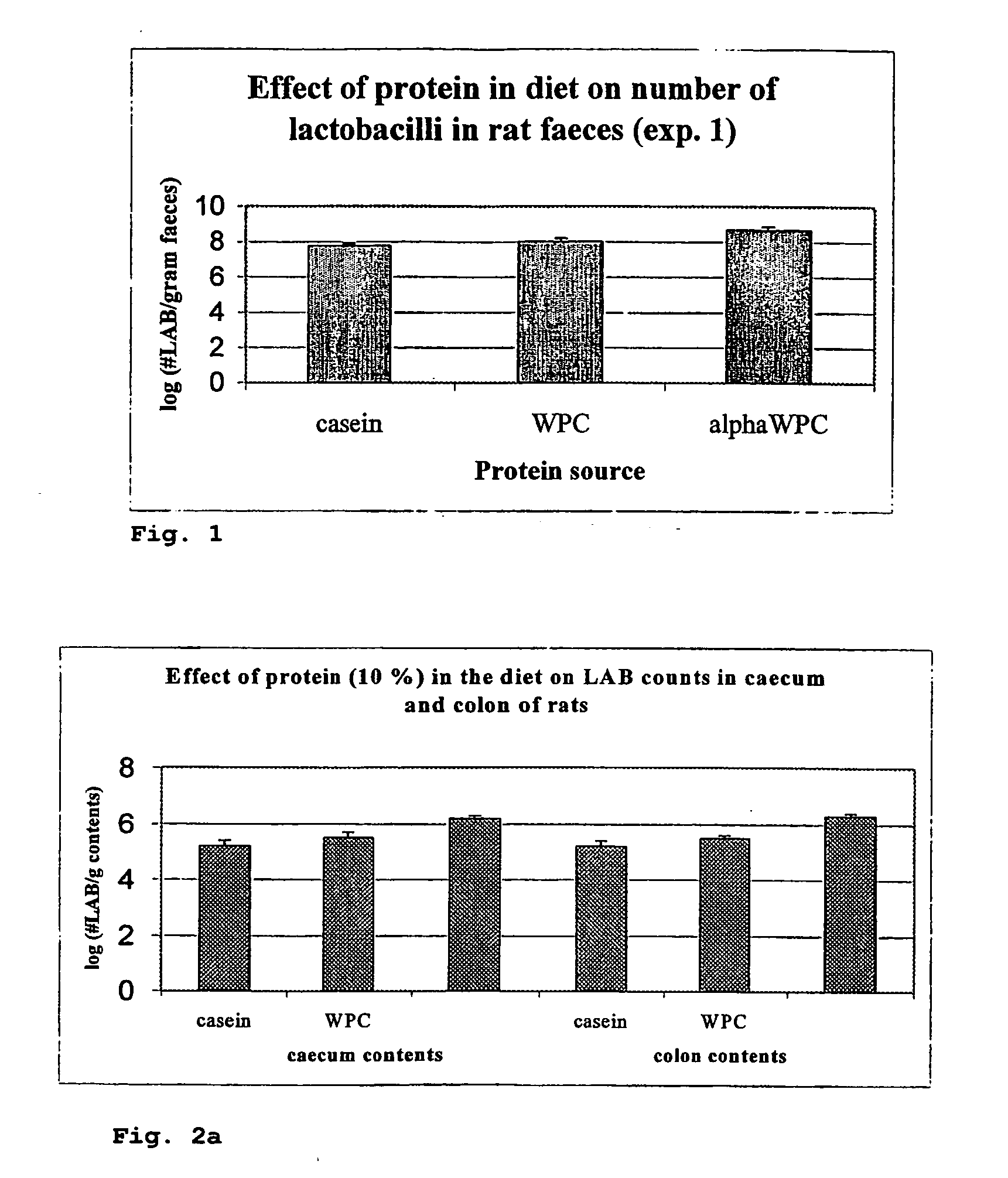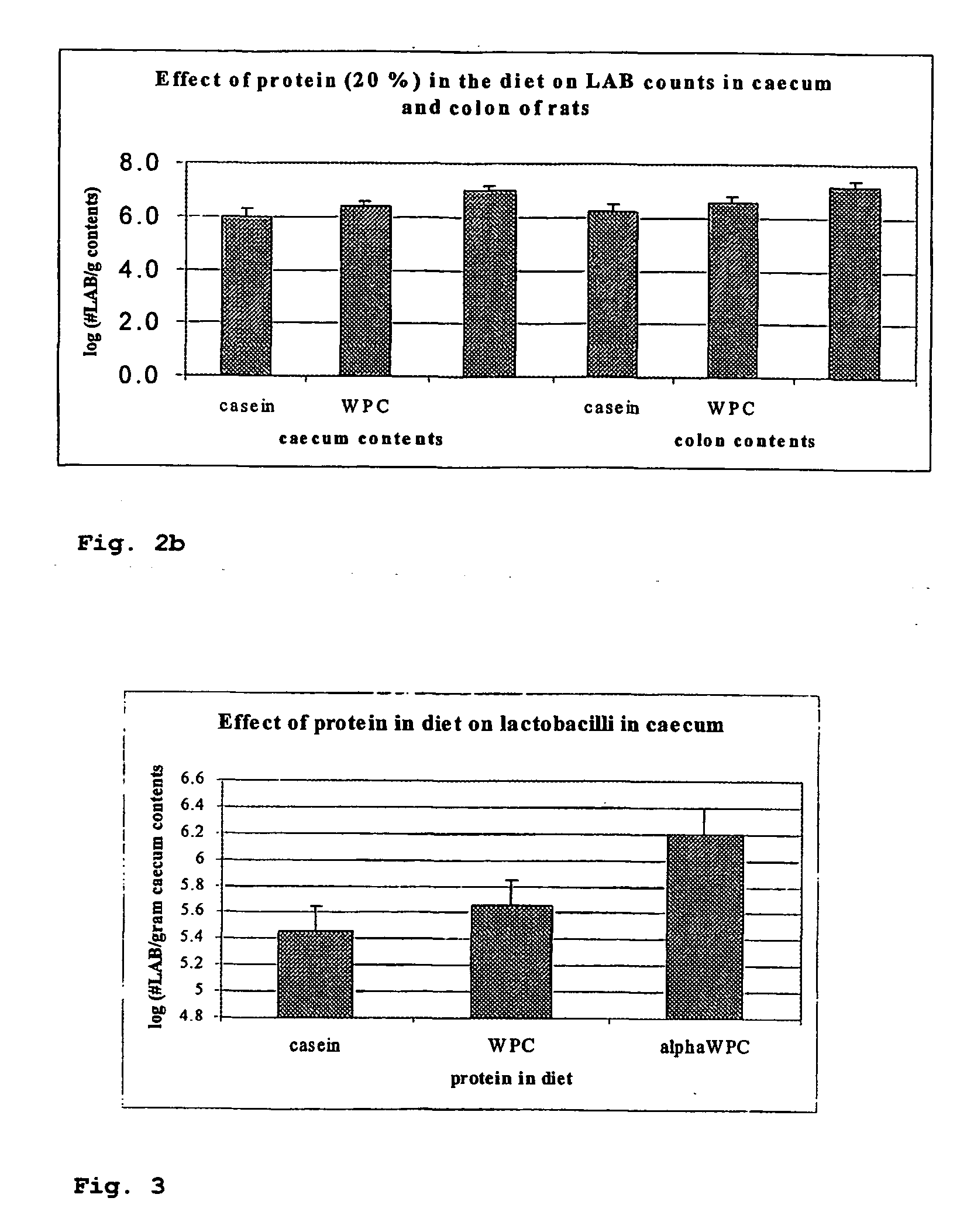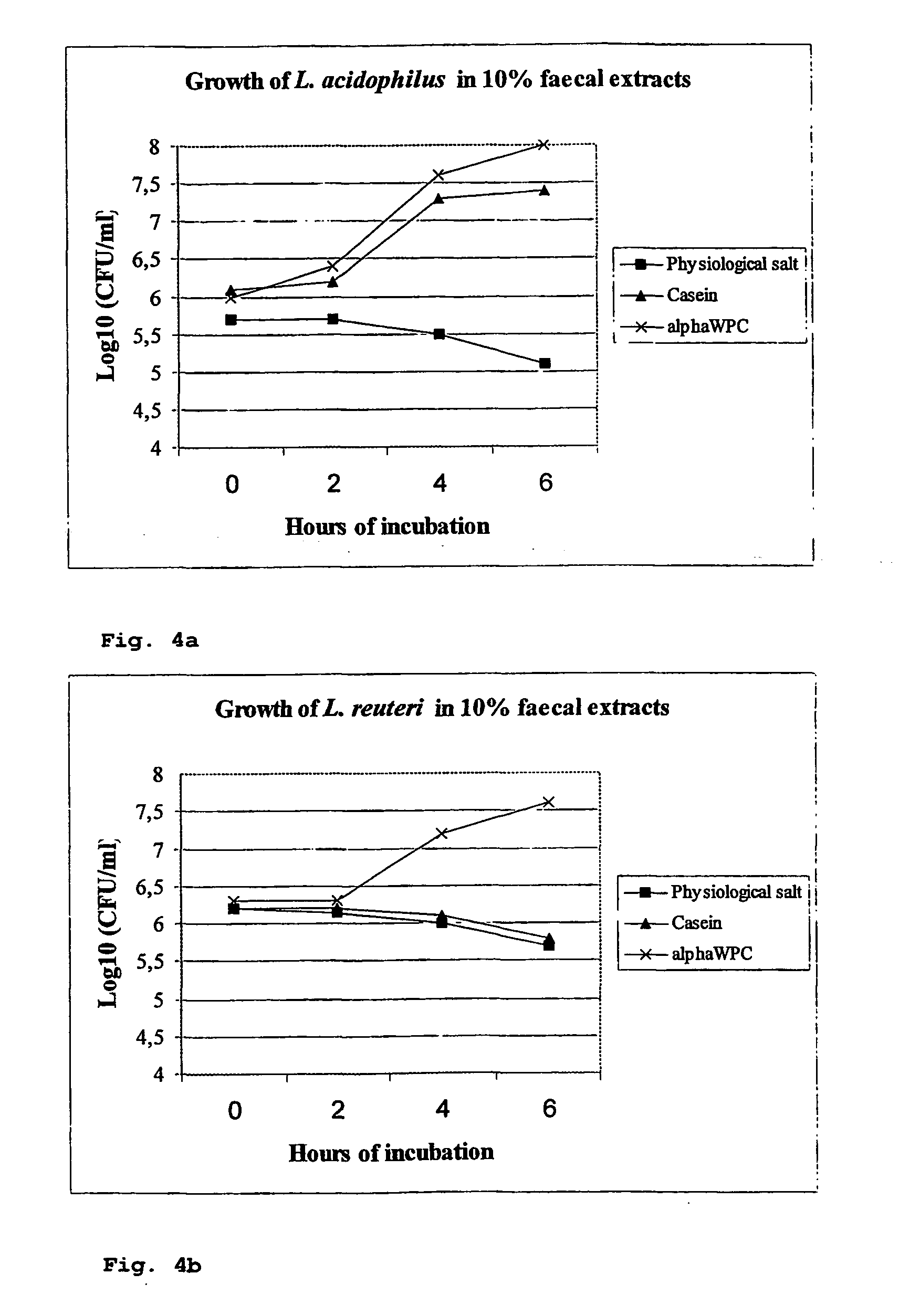$g(a)-lactalbumin as prebiotic agent
a technology of g (a)-lactalbumin and prebiotic agent, which is applied in the direction of drug composition, peptide/protein ingredient, metabolic disorder, etc., can solve the problems that the substantial proportion of food base materials cannot survive, and therefore cannot be considered "ready-to-consume" food products
- Summary
- Abstract
- Description
- Claims
- Application Information
AI Technical Summary
Problems solved by technology
Method used
Image
Examples
example 1
[0039] Effect of .alpha.-Lactalbumin on the Total Lactobacillus Counts in Rat Faeces
[0040] Male Wistar rats, SPF (specific pathogen free), six weeks old, were divided into groups as is depicted in Table 1. Animals were fed a diet containing 10% protein, 20% fat (50% palm oil, 50% corn oil), 63% glucose, 2% cellulose, and 5% of a vitamin and mineral mixture according to AIN 93. Water was supplied ad libidum.
1TABLE 1 Group Rat Numbers Protein source g .alpha.-lac. / 100 g diet A 1, 4, 7, 10, 13, 16 Casein 0.00 B 2, 5, 8, 11, 14, 17 WPC 80* 0.48 C 3, 6, 9, 12, 15, 18 .alpha.WPC** 2.40 *WPC 80 (Esprion 580, DMV International, The Netherlands). This product contains approximately 12% .alpha.-lactalbumin / protein **.alpha.-lactalbumin enriched WPC 80 (60% .alpha.-lactalbumin / protein)
[0041] In the "casein" diet (A), the protein source was 100% casein.
[0042] In the "WPC" diet (B), the protein consisted of 50% casein and 50% WPC.
[0043] In the "WPC" diet (C), the protein consisted of 50% casein ...
example 2
[0050] Effect of Protein in the Diet on the Number of Lactobacilli in the Caecum and Colon of the Rat.
[0051] This experiment was performed as experiment 1. Rats were killed and the caecum was removed. Diets containing 10 or 20% protein were used. A diet containing 20% protein more closely resembles a human, western diet. In this case, part of the glucose in the diet was replaced by extra protein. In earlier experiments, only marginal diets containing 10% protein were used to increase the chance of finding significant effects.
[0052] After the 14 day feeding period, the rats were killed and caecum and colon contents removed. Serial ten-fold dilutions of caecum and colon contents in physiological salt solution were plated onto MRS plates to determine the total Lactobacillus counts. The results are shown in table 3 and FIGS. 2A and 2B. The number of lactobacilli is significantly higher when feeding rats a diet containing .alpha.WPC compared to casein or WPC. The number of lactobacilli i...
example 3
[0053] Effect of Protein in the Rat Diet on the Total Count and Composition of the Lactobacillus Population in the Caecum.
[0054] The same rats as used in experiment 1 were used to determine the total number of lactobacilli in the caecum and to analyse the composition of the lactobacillus flora. At the end of the experiment, the rats were killed and the caecum was removed. The caecum content was diluted in a physiological salt solution by serial ten-fold dilution steps. Dilutions were plated onto MRS plates. The composition of the lactobacillus flora was determined by analysing a representative sample of the colonies on the MRS plates by RAPD-PCR, followed by 16S RNA sequence analysis.
[0055] The results are shown in table 4 and FIG. 3. As shown in table 4 and FIG. 3, the number of lactobacilli in the rat caecum is significantly higher when using an .alpha.WPC diet as compared to a casein or WPC diet. Moreover, the lactobacillus flora is more diverse as well, which is generally accept...
PUM
| Property | Measurement | Unit |
|---|---|---|
| acid | aaaaa | aaaaa |
| composition | aaaaa | aaaaa |
| concentrations | aaaaa | aaaaa |
Abstract
Description
Claims
Application Information
 Login to View More
Login to View More - R&D
- Intellectual Property
- Life Sciences
- Materials
- Tech Scout
- Unparalleled Data Quality
- Higher Quality Content
- 60% Fewer Hallucinations
Browse by: Latest US Patents, China's latest patents, Technical Efficacy Thesaurus, Application Domain, Technology Topic, Popular Technical Reports.
© 2025 PatSnap. All rights reserved.Legal|Privacy policy|Modern Slavery Act Transparency Statement|Sitemap|About US| Contact US: help@patsnap.com



